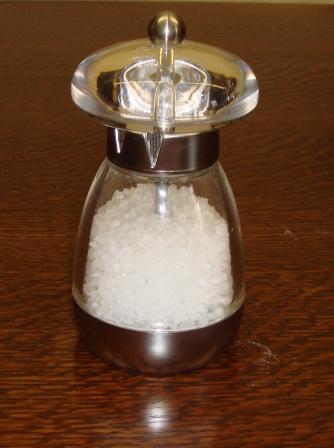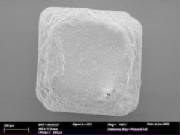Salt - Nanowire
We are all familiar with table salt, or sodium chloride (NaCl). This essential, common compound is ordinarily crystalline and brittle in nature. However, many materials behave strangely on the scale of minute quantities, and salt is no exception. Researchers at Boston College have explored tiny salt samples at close distance using an atomic force microscope. This sensitive instrument detects small forces generated by the sample molecules. When the microscope probe was directed within about seven nanometers (less than a millionth of an inch) of the salt surface, a strong, unexpected attractive force developed. As a result, a tiny portion of the salt material stretched out and touched the probe. This bridge shows that salt behaves elastically on the microscopic scale. Rather than the salt crystal breaking into fragments, its surface atoms become wire-like.
Further close-up study of the salt behavior reveals the salt’s stretched-out structure to be fiber-like. Sodium chloride suggests a novel way to make miniature wire by ultra-close contact with surfaces. Research continues with other materials to determine if they also form wire-like structures. On the nanoscale, such wires are useful in solar collectors and electronic circuits. Everyday salt may well teach us how to fabricate nanowires.


Ehrenberg, Rachel. August 1, 2009. Salt turns to taffy at the nanoscale. Science News p. 14.